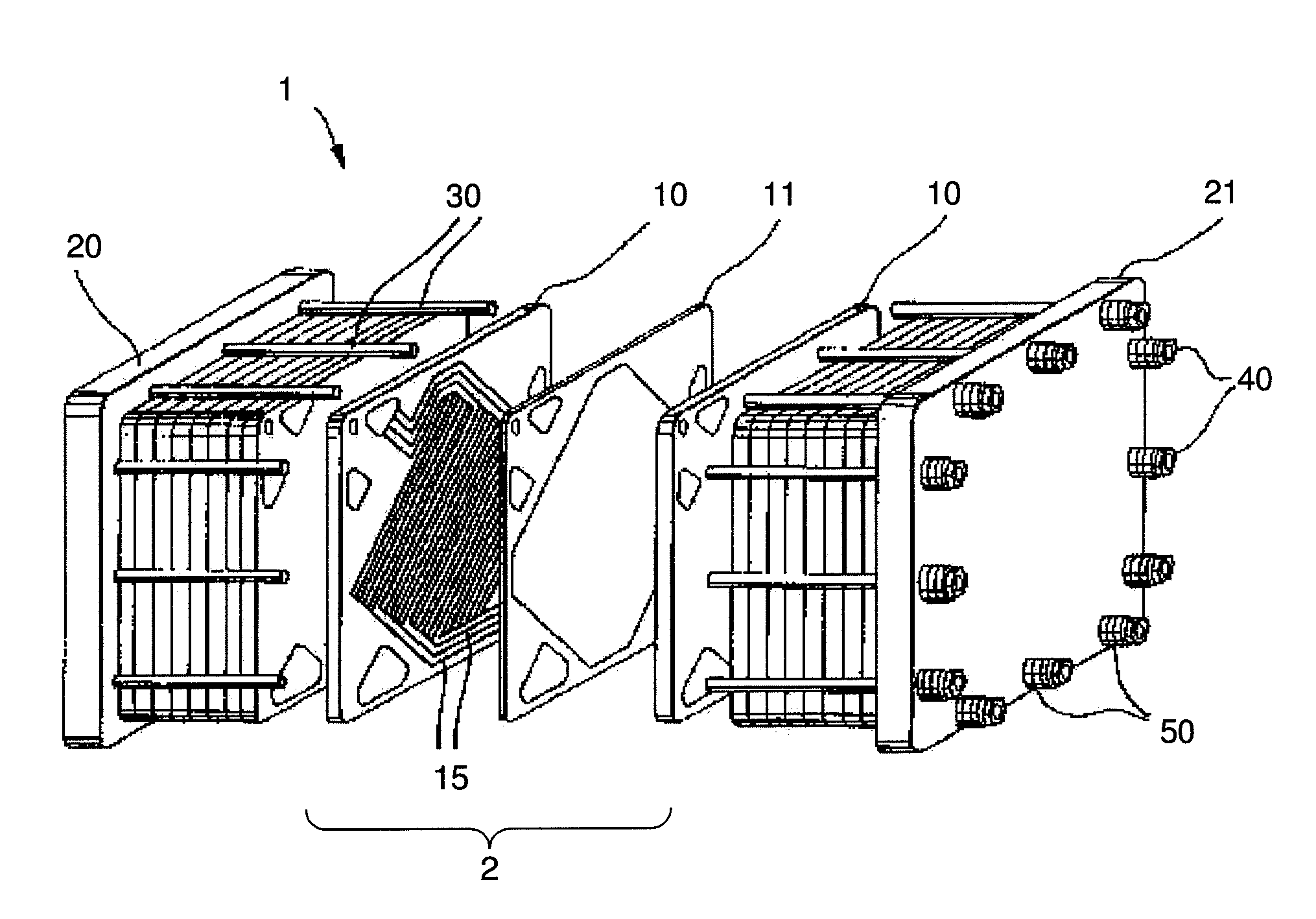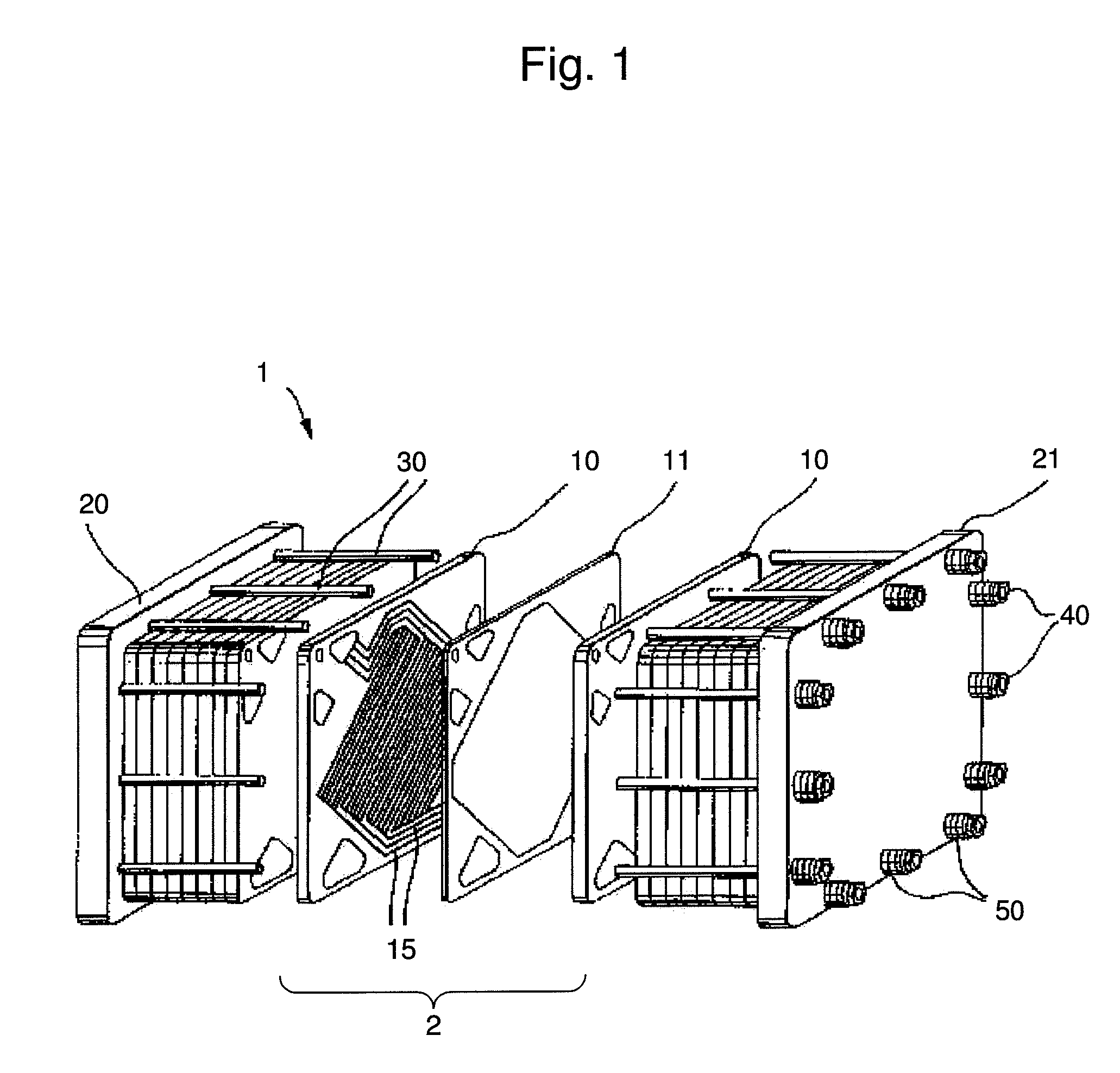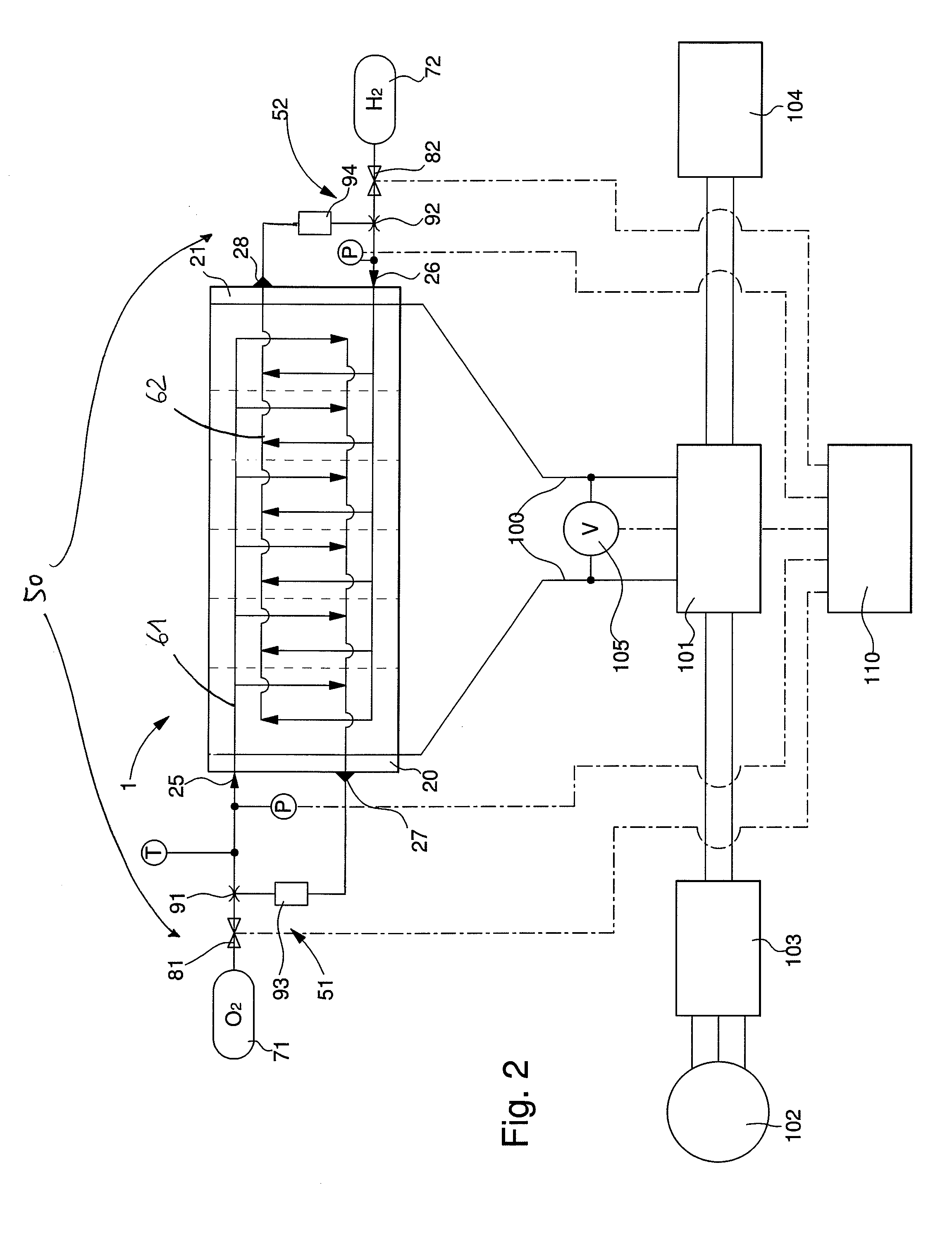Method for the early detection of liquid water formation in a fuel cell
a fuel cell and liquid water technology, applied in the field of fuel cells, can solve the problems of dramatic drop in complex implementation, and even destruction of the blockage of the cell, and achieve the effect of reducing the power of the fuel cell
- Summary
- Abstract
- Description
- Claims
- Application Information
AI Technical Summary
Benefits of technology
Problems solved by technology
Method used
Image
Examples
Embodiment Construction
[0016]The method of detecting liquid water formation according to the invention is applied to a fuel cell 1 of the type described above. FIG. 2 shows this cell 1 schematically, with its gas supply circuit 50. Circuit 50 includes, in a conventional manner, a first, oxygen supply sub-circuit 51 and a second, hydrogen supply sub-circuit 52 connected to end plates 20 and 21 of cell 1 by inlet connections 25, 26 and outlet connections 27, 28. Each supply sub-circuit 51, 52 forms, with distribution channels 15 of each of the two gases, a closed flow loop, respectively 61 and 62, in which one of the reaction gases, at a pressure typically of between 2 and 3 bars, and the reaction product both flow. Supply sub-circuits 51, 52 have pressurised tanks 71, 72, for supplying each of flow loops 61, 62 with fresh gas, which are opened and closed via electromechanical valves 81, 82. They are also fitted with flow pumps 91, 92, such as Bernouilli effect pumps, with an inlet for the fresh gas, and us...
PUM
| Property | Measurement | Unit |
|---|---|---|
| pressure | aaaaa | aaaaa |
| pressure | aaaaa | aaaaa |
| temperature | aaaaa | aaaaa |
Abstract
Description
Claims
Application Information
 Login to View More
Login to View More - R&D
- Intellectual Property
- Life Sciences
- Materials
- Tech Scout
- Unparalleled Data Quality
- Higher Quality Content
- 60% Fewer Hallucinations
Browse by: Latest US Patents, China's latest patents, Technical Efficacy Thesaurus, Application Domain, Technology Topic, Popular Technical Reports.
© 2025 PatSnap. All rights reserved.Legal|Privacy policy|Modern Slavery Act Transparency Statement|Sitemap|About US| Contact US: help@patsnap.com



